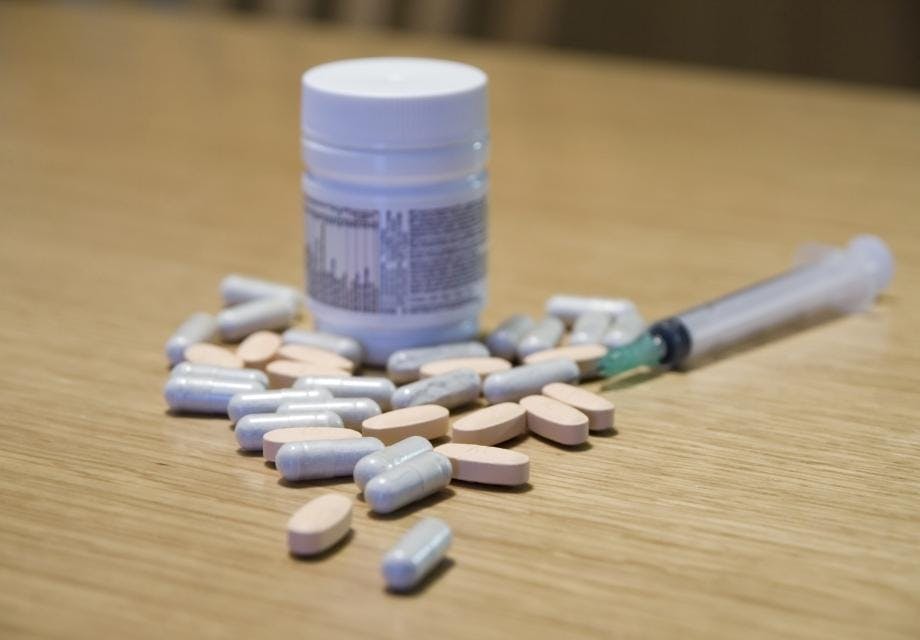Harm reduction for people who use drugs: more services are becoming available but challenges remain
Hester Phillips
12 December 2022
A global report on harm reduction for people who use drugs finds services have increased but funding is shrinking
A global report on harm reduction for people who use drugs finds services have increased for the first since 2014. But in most parts of the world, services are still severely lacking and funding is shrinking.
What is the report about?
Harm Reduction International’s Global State of Harm Reduction (pdf) assesses harm reduction services across the world every two years. This latest report covers the period 2020-2022.
Harm reduction aims to reduce HIV infections and other harms associated with drug use. It includes needle and syringe programmes (NSPs) and opioid agonist therapy (OAT).
Why is this report important?
People who inject drugs are 35 times more at risk of getting HIV than other people. And although HIV infections are falling overall, UNAIDS reports no change in infection rates among people who inject drugs.
Evidence shows (pdf) that HIV infections fall when people who use drugs have access to harm reduction and other public health programmes.
What does it say?
There is still a lack of harm reduction services, and there are big differences between countries. But for the first time since 2014, the number of countries providing harm reduction services has increased. This growth is due to new NSPs and OAT programmes opening in Africa.
International donors’ funding for harm reduction is shrinking. In low- and middle-income countries, harm reduction funding is only 5% of the level needed.
Findings from key regions:
Eastern and Southern Africa
- 410,000 people inject drugs, 21.8% of whom have HIV. But this is a rough estimate due to a lack of data.
- 7 countries (33%) provide NSPs. This is 1 more since 2020 (Uganda).
- 7 countries (33%) provide OAT (no change since 2020).
Heroin use is increasing. This is causing HIV and hepatitis infections to rise among people who inject drugs. Cocaine and methamphetamine use have also increased. Methamphetamine use is particularly widespread in South Africa.
The lack of data is a big problem. And what data exists mainly focuses on men who use drugs, not women. Often, harm reduction services do not cater for women’s needs.
On the policy side, Uganda has recognised people who inject drugs as a key population at risk of HIV for the first time. Kenya has revised its OAT guidelines to include take-home doses of methadone. It has also decriminalised drug equipment, and now legally recognises the difference between amounts for personal use and amounts for trafficking.
West and Central Africa
- A lack of data means it is not possible to estimate the number of people who inject drugs.
- 9 countries (36%) provide NSP. This is 4 more since 2020 (Burundi, Côte d’Ivoire, DRC and Guinea).
- 5 countries (20%) provide OAT (no change since 2020).
Many policy-makers still misunderstand harm reduction, thinking it increases drug use rather than protects public health. But there is some progress – in March 2020, Ghana passed a new drug law that treats drug use as a public health issue.
Asia
- 2.5 million people inject drugs. Many others use drugs via other methods.
- 12 countries (50%) provide NSPs (no change since 2020).
- 14 countries (58%) provide OAT (no change since 2020).
In some Asian countries, the drug of choice is changing from heroin to methamphetamine.
Chemsex among gay men and men who have sex with men is increasing. This is when people use drugs for sexual pleasure, often in group-sex situations. People who have chemsex are at higher risk of HIV than other people, according to studies from the region.
What does this mean for HIV services?
Advocacy
There is an urgent need to advocate for a health and human-rights based approach to drug use to increase access to harm reduction for people who use drugs. In countries already providing harm reduction, advocates can make a difference by pushing for services to scale-up and take women’s needs into account.
UNAIDS’s Global AIDS Strategy 2021-2026 (pdf) and the UN Political Declaration on HIV and AIDS (pdf) can be used in these advocacy efforts. The strategy offers a way for countries to move towards more supportive legal environments. Governments have committed to these agreements so advocates can use them to hold governments accountable. The same goes for the African Union’s Plan of Action on Drugs and Crime 2019-2023 (pdf). This makes it clear that OAT is an essential part of harm reduction, for example. Advocates can also use Ghana’s new drug law as an example of what a health and rights-based legal approach can look like.
Gathering evidence
The severe lack of data about people who use drugs needs to be addressed, particularly in African countries. It is essential that organisations led by or involving people who use drugs are involved in gathering and assessing this data, or it is likely that research projects will give inaccurate pictures.
Addressing the rise in chemsex and methamphetamine
A lot of chemsex involves drugs that are swallowed, like MDMA, which current harm reduction programmes do not cover. The first step is to make people aware of the risks and what they can do to reduce them (such as taking PrEP). Methamphetamine is also creating new harm reduction needs, such as the need for safer smoking kits containing glass pipes.
Get our news and blogs by email
Keep up-to-date with all our latest news stories and blogs by signing up to the Be in the KNOW news digest.
